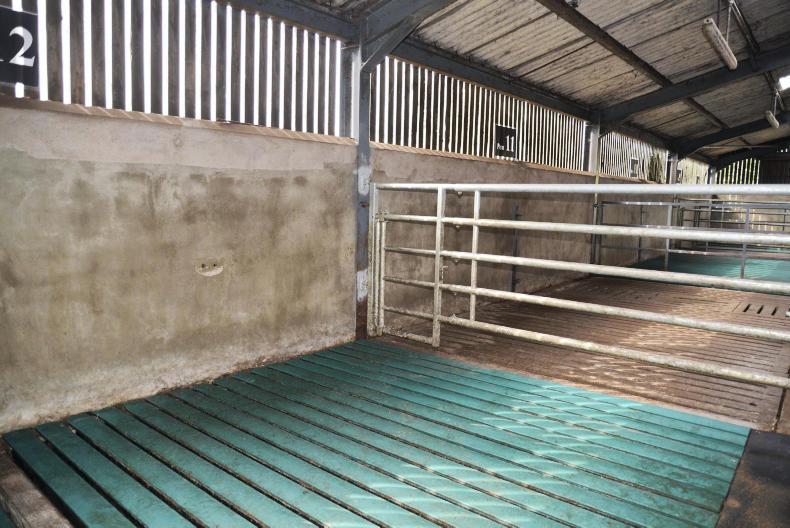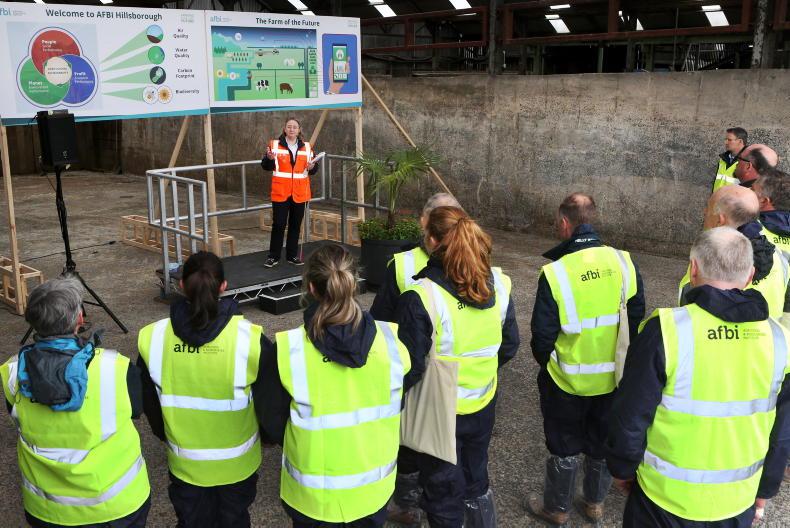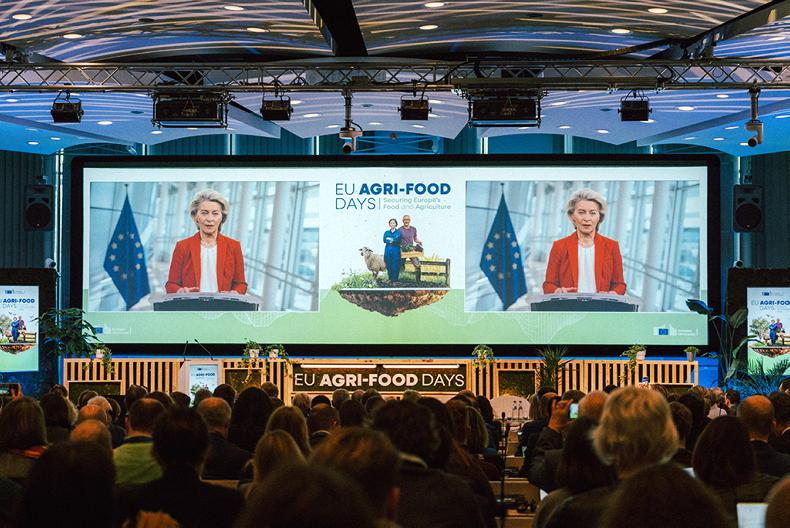Slatted floors are popular throughout Ireland, as they offer a labour and cost-effective system of slurry management that does not need bedding or regular cleaning out. However, there is clear evidence from previous AFBI studies that rubber floors have the potential to enhance animal welfare, as beef cattle prefer them to concrete slats for lying and standing. Previous reports had conflicting effects of overlaying slats with rubber on animal performance, as detailed in Table 1.
Within a DAERA (Department of Agriculture, Environment and Rural Affairs) funded programme of work, AFBI has recently completed a series of studies examining the effect of overlaying concrete slats with rubber for dairy-origin bulls. The rubber was clipped into position directly over the concrete slat, using a plastic rigid fixing system at each side of the slat. To reflect typical rearing protocols, the bulls were grazed for several months during the season, before being intensively finished indoors and slaughtered at less than 16 months old. Therefore, this AFBI research was the first to examine the effect of floor type on dairy-origin bulls which have had a grazing period before housing. Key questions asked were:
How does overlaying slats with rubber affect bull performance and welfare?Is it economically viable for farmers to overlay slats with rubber for dairy-origin beef bulls?Animal performance
A description of the studies and the age and liveweight of the bulls used are presented in Table 2 and the performance of the animals in Table 3.
The data from the three studies was combined and statistical analysis of this combined data gave a clear picture of the positive effect of overlaying slats with rubber on performance in Table 4.
Across the three trials an average 9kg increase in carcase weight was found in dairy-origin bulls accommodated on rubber covered slats compared with those on concrete slats (Table 4).
At current beef and rubber overlay prices, this equates to a payback time of three and a half years, after which there would be an increase in profit for the producer.
Many variables such as breed, slaughter weight, pen space allowance, group size, pre-experiment accommodation, rubber product type and diet could potentially have an impact on the effect of floor type on animal performance. Of these, gender seemed to have an important role; the effect of floor type on performance has been commonly observed in bulls, but not in steers or heifers. The reasons behind these gender differences are not fully understood but may be related to the higher growth rates of bulls. The different production systems of rearing and finishing bulls compared with steers and heifers mean that bulls tend to have one longer housing period, instead of two shorter housing periods like steers and heifers.
Furthermore, results from the recent AFBI project indicated that the effect of floor type on performance is influenced by the diet offered. When bulls were offered ad libitum concentrates, those accommodated on rubber covered slats had a higher concentrate intake than those on concrete slats.
There was no difference in intake between cattle on the two floor types. Additionally, changing floor type from slats to rubber or straw during the finishing period had no effect on animal performance
Cattle cleanliness
Another important aspect to consider is the cleanliness of cattle, since a dirtier hide is associated with higher bacterial contamination of the carcases. Increased dirtiness of cattle accommodated on rubber covered slats has previously been associated with the lower drainage area, relative to fully slatted concrete floors. AFBI’s recent project indicated that floor type had no effect on the cleanliness at slaughter of beef cattle in any of the studies, but an interesting pattern emerged in animal cleanliness (Figure 1). All animals got dirtier when housed, but as they lost their winter coats they became cleaner.
There was evidence that during this period those accommodated on rubber covered slats were cleaner, even though the drainage area was reduced when compared with concrete slats (18 vs 24% respectively). However, floor type had no significant effect on animal cleanliness by slaughter.
Commercial suppliers of rubber overlays for slats have been focused on cattle cleanliness in their design, and the style of rubber used in this series of studies was curved on the upper side of the slat to assist removal of faeces and urine into the slurry tank below.
Contrary to our expectations, increasing the space had no effect on the dirtiness of the bulls.
Health and behaviour
Lameness can negatively affect overall livestock productivity (and thus farm profit margins), so it was important to assess as part of the project. Researchers in Sweden have raised concerns about hoof health and joint swelling in cattle accommodated on fully slatted concrete floors, whilst German scientists found cattle are less able to get up and down on concrete slats.
On the other hand, Italian researchers expressed concern that rubber flooring is not abrasive enough for sufficient hoof wear and could result in cattle with overgrown hooves.

Dairy bulls were finished under 16 months as part of the trial.
Within the AFBI programme, there was less sole bruising noted in bulls kept on rubber slats compared with concrete slats. Despite some evidence of greater claw dimensions in bulls on rubber flooring, there was no effect on locomotion score, indicating that this degree of increased hoof net growth had no impact on walking ability. The abrasiveness of concrete slats is likely linked to the age of the slats and different commercial rubber products having varying hardness and abrasiveness.
An analysis of the bulls’ lying and standing behaviours indicated that cattle on slats took less steps and got up and down less often than those on rubber. Cattle finished on straw got up and down more often and took the highest number of steps. This suggests that rubber flooring is a potential compromise between concrete slats and straw bedding.
Slatted floors are popular throughout Ireland, as they offer a labour and cost-effective system of slurry management that does not need bedding or regular cleaning out. However, there is clear evidence from previous AFBI studies that rubber floors have the potential to enhance animal welfare, as beef cattle prefer them to concrete slats for lying and standing. Previous reports had conflicting effects of overlaying slats with rubber on animal performance, as detailed in Table 1.
Within a DAERA (Department of Agriculture, Environment and Rural Affairs) funded programme of work, AFBI has recently completed a series of studies examining the effect of overlaying concrete slats with rubber for dairy-origin bulls. The rubber was clipped into position directly over the concrete slat, using a plastic rigid fixing system at each side of the slat. To reflect typical rearing protocols, the bulls were grazed for several months during the season, before being intensively finished indoors and slaughtered at less than 16 months old. Therefore, this AFBI research was the first to examine the effect of floor type on dairy-origin bulls which have had a grazing period before housing. Key questions asked were:
How does overlaying slats with rubber affect bull performance and welfare?Is it economically viable for farmers to overlay slats with rubber for dairy-origin beef bulls?Animal performance
A description of the studies and the age and liveweight of the bulls used are presented in Table 2 and the performance of the animals in Table 3.
The data from the three studies was combined and statistical analysis of this combined data gave a clear picture of the positive effect of overlaying slats with rubber on performance in Table 4.
Across the three trials an average 9kg increase in carcase weight was found in dairy-origin bulls accommodated on rubber covered slats compared with those on concrete slats (Table 4).
At current beef and rubber overlay prices, this equates to a payback time of three and a half years, after which there would be an increase in profit for the producer.
Many variables such as breed, slaughter weight, pen space allowance, group size, pre-experiment accommodation, rubber product type and diet could potentially have an impact on the effect of floor type on animal performance. Of these, gender seemed to have an important role; the effect of floor type on performance has been commonly observed in bulls, but not in steers or heifers. The reasons behind these gender differences are not fully understood but may be related to the higher growth rates of bulls. The different production systems of rearing and finishing bulls compared with steers and heifers mean that bulls tend to have one longer housing period, instead of two shorter housing periods like steers and heifers.
Furthermore, results from the recent AFBI project indicated that the effect of floor type on performance is influenced by the diet offered. When bulls were offered ad libitum concentrates, those accommodated on rubber covered slats had a higher concentrate intake than those on concrete slats.
There was no difference in intake between cattle on the two floor types. Additionally, changing floor type from slats to rubber or straw during the finishing period had no effect on animal performance
Cattle cleanliness
Another important aspect to consider is the cleanliness of cattle, since a dirtier hide is associated with higher bacterial contamination of the carcases. Increased dirtiness of cattle accommodated on rubber covered slats has previously been associated with the lower drainage area, relative to fully slatted concrete floors. AFBI’s recent project indicated that floor type had no effect on the cleanliness at slaughter of beef cattle in any of the studies, but an interesting pattern emerged in animal cleanliness (Figure 1). All animals got dirtier when housed, but as they lost their winter coats they became cleaner.
There was evidence that during this period those accommodated on rubber covered slats were cleaner, even though the drainage area was reduced when compared with concrete slats (18 vs 24% respectively). However, floor type had no significant effect on animal cleanliness by slaughter.
Commercial suppliers of rubber overlays for slats have been focused on cattle cleanliness in their design, and the style of rubber used in this series of studies was curved on the upper side of the slat to assist removal of faeces and urine into the slurry tank below.
Contrary to our expectations, increasing the space had no effect on the dirtiness of the bulls.
Health and behaviour
Lameness can negatively affect overall livestock productivity (and thus farm profit margins), so it was important to assess as part of the project. Researchers in Sweden have raised concerns about hoof health and joint swelling in cattle accommodated on fully slatted concrete floors, whilst German scientists found cattle are less able to get up and down on concrete slats.
On the other hand, Italian researchers expressed concern that rubber flooring is not abrasive enough for sufficient hoof wear and could result in cattle with overgrown hooves.

Dairy bulls were finished under 16 months as part of the trial.
Within the AFBI programme, there was less sole bruising noted in bulls kept on rubber slats compared with concrete slats. Despite some evidence of greater claw dimensions in bulls on rubber flooring, there was no effect on locomotion score, indicating that this degree of increased hoof net growth had no impact on walking ability. The abrasiveness of concrete slats is likely linked to the age of the slats and different commercial rubber products having varying hardness and abrasiveness.
An analysis of the bulls’ lying and standing behaviours indicated that cattle on slats took less steps and got up and down less often than those on rubber. Cattle finished on straw got up and down more often and took the highest number of steps. This suggests that rubber flooring is a potential compromise between concrete slats and straw bedding.










SHARING OPTIONS